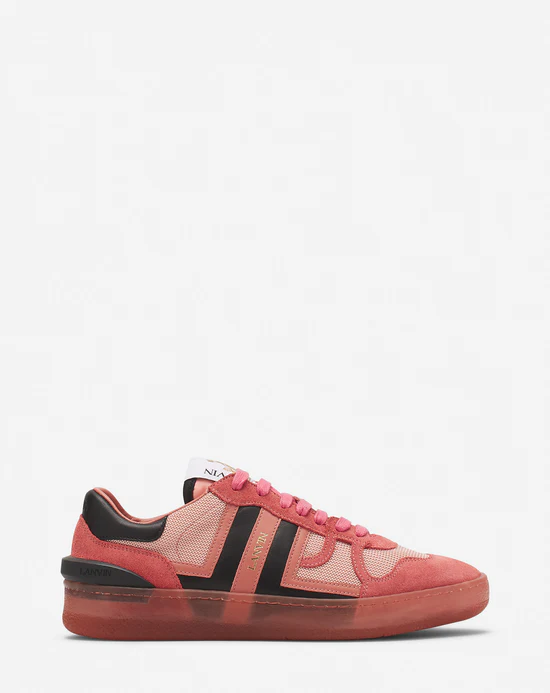
Lanvin, the oldest French fashion house still in operation, stands as a beacon of timeless elegance, refinement, and creativity. Founded in 1889 by Jeanne Lanvin, the brand has endured for over a century, evolving with the times while maintaining its core philosophy of grace, sophistication, and innovation. From its humble beginnings as a hat shop in Paris, Lanvin has grown into a global luxury fashion label, encompassing women’s and men’s clothing, accessories, fragrances, and more.
The Visionary Behind Lanvin: Jeanne Lanvin
Jeanne Lanvin was not merely a designer but a true visionary who shaped the landscape of modern fashion. Initially a milliner, Jeanne quickly transitioned into dressmaking after creating elaborate outfits for her daughter, which caught the attention of wealthy Parisians. What started as a personal gesture of love for her daughter, Marguerite, turned into a flourishing business. By the early 20th century, Lanvin had become synonymous with Parisian elegance, known for its romantic silhouettes, rich embroidery, and exquisite craftsmanship.
Jeanne Lanvin’s designs reflected a deep understanding of femininity and movement. She embraced pastel colors, delicate fabrics, and flowing lines at a time when stiff, corseted garments were still the norm. Her pioneering spirit wasn’t limited to fashion; she was one of the first designers to create a lifestyle brand, introducing children’s wear, menswear, home décor, and the now-iconic Arpège perfume.
Lanvin’s Golden Era in Fashion History
The 1920s and 1930s marked the golden age for Lanvin. During this time, Jeanne’s reputation solidified not just in France but across Europe and the United States. Her work aligned perfectly with the Art Deco period, a time when modernism, elegance, and craftsmanship came together. The intricate embroideries, beadwork, and use of innovative fabrics during this period remain highly influential even today.
Lanvin’s atelier was known for its unmatched attention to detail. Jeanne worked with master craftsmen to ensure that every piece bore the hallmark of quality. Her influence was such that she became a founding member of the Chambre Syndicale de la Haute Couture, a governing body that still regulates French haute couture today.
The Introduction of Lanvin Parfums
One of Jeanne Lanvin Sneakers most enduring legacies is her contribution to the fragrance industry. In 1927, she launched Arpège, a perfume created as a birthday gift for her daughter. Named after the musical term “arpeggio,” the fragrance became a symbol of elegance and motherly love. Even today, Arpège is considered a classic in the world of perfumery, known for its rich, floral composition and timeless appeal.
This expansion into fragrance marked Lanvin as one of the earliest luxury fashion houses to recognize the power of branding across multiple lifestyle segments. The perfume bottle, designed by artist Paul Iribe, featured the iconic logo of Jeanne and her daughter, a powerful representation of the brand’s origins and emotional depth.
Reinventing Lanvin in the Modern Era
After Jeanne Lanvin’s death in 1946, the house went through multiple transitions. Though it remained respected in haute couture circles, it struggled to maintain the visionary leadership that Jeanne had provided. It wasn’t until the early 2000s that Lanvin experienced a significant revival under the creative direction of Alber Elbaz.
Appointed in 2001, Alber Elbaz breathed new life into the brand. His vision combined romanticism with a modern sensibility. His designs, known for their draped silhouettes, luxurious fabrics, and feminine details, resonated with a new generation of women. Elbaz restored Lanvin’s relevance on the global fashion stage, winning acclaim from critics and celebrities alike.
Under Elbaz’s leadership, Lanvin became a red carpet favorite. Yet, unlike other fashion houses, Lanvin under Elbaz retained an air of humility and understated beauty. His philosophy centered around dressing real women, and he frequently spoke about emotion and sincerity in design—principles that aligned with Jeanne Lanvin’s original ethos.
Lanvin’s Menswear and International Expansion
While historically known for womenswear, Lanvin’s menswear line has also become a defining element of the brand. Particularly during Lucas Ossendrijver’s tenure, Lanvin’s menswear was celebrated for its mix of classic tailoring and contemporary flair. It catered to the modern man who valued both tradition and individuality.
Globally, Lanvin has expanded its footprint across major cities, from Paris to New York, Tokyo, and beyond. Its boutiques reflect the brand’s refined yet accessible luxury, offering an immersive experience into the Lanvin lifestyle.
The Challenges and Changes of the 21st Century
Despite its success, Lanvin has not been immune to the challenges facing the modern fashion industry. In 2015, the unexpected dismissal of Alber Elbaz caused shockwaves. The following years saw frequent changes in creative leadership, resulting in a period of uncertainty for the house.
However, Lanvin has shown resilience. New designers have sought to reinterpret the brand’s rich heritage for a contemporary audience, blending its historical elegance with current fashion trends. Through innovation in digital fashion shows, collaborations, and sustainable practices, Lanvin continues to evolve in an ever-changing industry.
The Legacy and Cultural Impact of Lanvin
More than just a fashion label, Lanvin represents a unique chapter in the history of couture. Jeanne Lanvin’s story as a self-made woman in a male-dominated industry is one of courage, creativity, and conviction. Her legacy lives on not only in the garments and perfumes but in the spirit of innovation she inspired.
Today, Lanvin remains a symbol of Parisian chic. It stands as a testament to the power of personal vision, artistry, and the enduring appeal of thoughtful design. Whether through a luxurious evening gown, a sharply tailored suit, or a timeless fragrance, Lanvin continues to embody the values of quality, elegance, and emotion.
Conclusion
Lanvin’s journey from a small Parisian hat shop to a global luxury powerhouse is a remarkable testament to innovation, resilience, and artistry. With its deep roots in history and an eye toward the future, Lanvin is more than a fashion brand—it is a living piece of cultural heritage. As the brand continues to navigate the ever-evolving fashion landscape, it does so with the same grace and vision that Jeanne Lanvin brought to life over a century ago.



